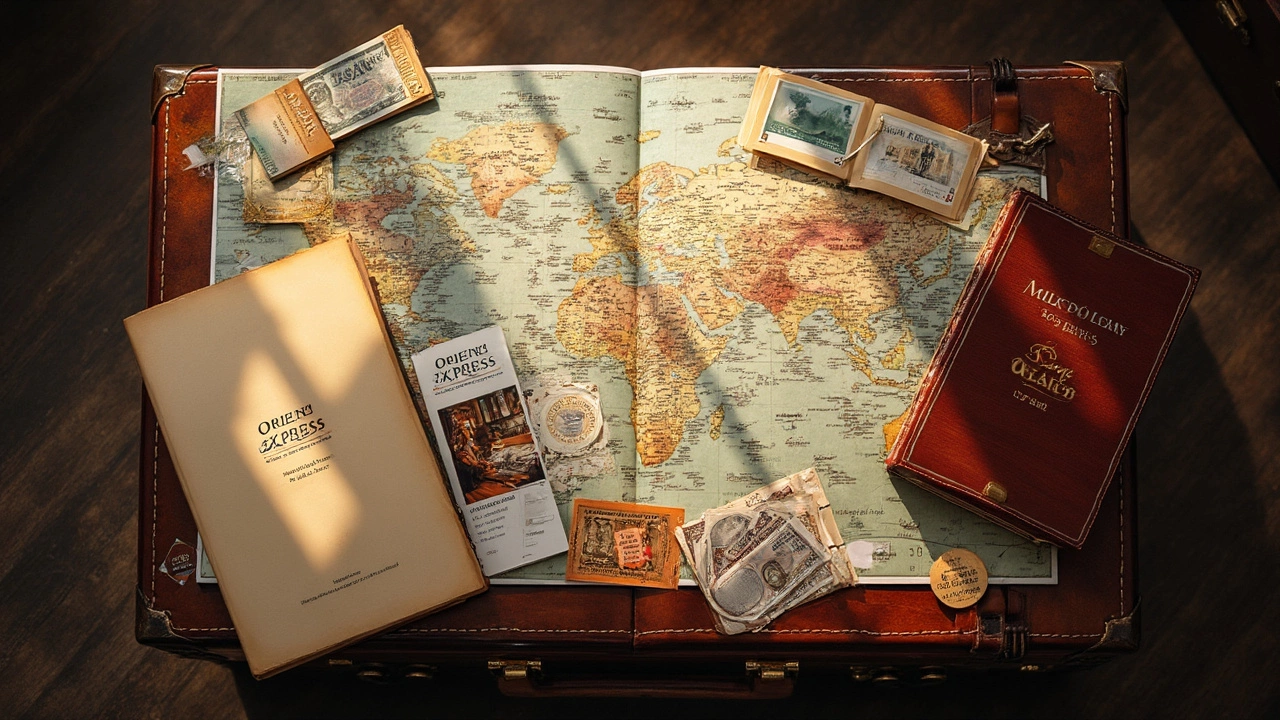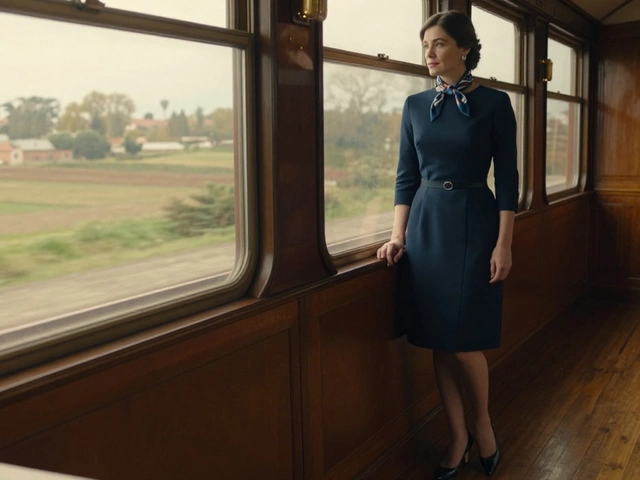Everybody dreams about hopping on the famous Orient Express, but the number one question I hear is: “How much is this actually going to cost me?” Spoiler alert: it’s not cheap, but the price tag covers a lot more than just a train seat.
The cost for a trip starts at around $3,600 per person for the classic one-night journey from London to Venice in a twin cabin. If you want a suite or the swanky Grand Suite, be ready to shell out $8,000—or even more—for the same route. Some of the most in-demand journeys, like Paris to Istanbul (the famous five-night adventure), can run $24,000 or higher per person in the fanciest suite. Yeah, it’s a lot, but that’s the reality of luxury train travel.
If you’re thinking about splurging on this iconic experience, it pays to know the real numbers—and exactly what you get for your money. I’ll walk you through what’s included, the routes and cabins, and a couple of sneaky tips that could save you some serious cash.
- What Makes the Orient Express So Special?
- Ticket Prices: Breaking Down the Costs
- What’s Included (And What’s Not)
- Money-Saving Tips for Booking
- Is It Worth the Splurge?
What Makes the Orient Express So Special?
The Orient Express cost isn’t just about the trip itself—it’s about what’s behind that price tag. The Venice Simplon-Orient-Express, the modern version, is famous for its history, service, and rare level of comfort that most other trains just can’t match.
First, there’s the nostalgia factor. These are real 1920s and 1930s carriages, restored to feel just like the original glamour days. The train feels more like a rolling time capsule than typical transport. Step inside, and you’re surrounded by art deco panels, polished wood, velvet sofas, and details you’ll want to show off on Instagram.
You don’t just sit and stare out the window. This journey is about the food (think white-tablecloth, three-course meals), attentive staff who seem to remember how you take your coffee, and pianist playing jazz in the bar car. It feels like a moving five-star hotel.
For anyone who loves numbers, here’s a quick breakdown of what makes this train stand out compared to regular and luxury travel:
| Feature | Regular Trains | Orient Express |
|---|---|---|
| Year Carriages Built | Modern (2000s+) | 1926-1931 (restored) |
| Staff to Guest Ratio | 1:25 | 1:3 |
| Dining Experience | Snack bar, standard meals | Gourmet, multi-course dinners |
| Cabin Types | Basic seats, first class | Twin, Suite, Grand Suite |
On top of all this, the routes are legendary, passing through the Alps, old European cities, and towns you’d never see on a regular vacation. The train only runs select journeys each year—so the whole thing feels exclusive. Fun fact: Only about 2,000 people get to ride the Paris-Istanbul route each year, so not everyone can just hop on whenever they want.
In short, the Orient Express isn’t just a ride, it’s a full-on once-in-a-lifetime showcase, with all the bells and whistles you can imagine packed into a few magical days on rails.
Ticket Prices: Breaking Down the Costs
The Orient Express cost surprises almost everyone. Prices change depending on your route, type of cabin, and the time of year you book. Here’s the real breakdown, so you know what you’re in for.
| Route | Cabin Type | Price Per Person (USD) |
|---|---|---|
| London to Venice (1 night) | Twin Cabin | $3,600–$4,000 |
| London to Venice (1 night) | Suite | $7,400–$10,000 |
| London to Venice (1 night) | Grand Suite | $11,000–$16,000 |
| Paris to Istanbul (5 nights) | Suite | $20,000–$24,000 |
| Paris to Istanbul (5 nights) | Grand Suite | $34,000+ |
If you go for the base twin cabin, you’ll pay less, but space is tight. Suites and Grand Suites offer more room, private bathrooms, and some pretty amazing perks, but the cost literally doubles—or more.
A couple things can shift the price. Summer trips, dates close to European holidays, and routes that run less often (like Venice to Vienna) can jump several hundred or even thousands of dollars above the lowest prices. Booking way ahead usually locks in the best rate. Last-minute trips, if they’re available, sometimes cost more.
- Shorter journeys (like Paris to Verona) can start around $2,900 per person for the lowest cabin tier.
- Adding a partner? Double occupancy is the norm, but single travelers pay a supplement, often nearly as much as two people together.
- Kids under 12 usually aren’t allowed on board (my Aria would have to wait, which definitely limits family trips).
Check for extra fees on top—transfers to the train station, extra hotel nights, and some drinks aren’t always included. The train is fancy, but not totally all-inclusive.

What’s Included (And What’s Not)
So, what do you really get when you pay for a trip on the Orient Express cost? For that eye-watering ticket price, they make sure you feel like royalty, but there are a few things that might surprise you.
First off, your ticket includes your private cabin or suite for the journey (think 1920s vibes but with modern bedding). All your meals onboard are covered—this isn’t just a sandwich and a coffee. You get gourmet, multi-course meals cooked by award-winning chefs. We’re talking posh breakfasts served in your cabin, fancy lunches, and three-course dinners in the opulent dining cars. Your fare also covers afternoon tea and snacks, plus most non-alcoholic drinks like tea, coffee, bottled water, and soft drinks.
- Private cabin or suite
- Gourmet meals: breakfast, lunch, dinner, and afternoon tea
- Most non-alcoholic drinks
- Personal steward on call (can make up beds or bring room service snacks)
- Train excursions and stopover surprises sometimes included (especially on longer routes)
But here’s what you need to budget extra for: alcohol is a big one—cocktails, wine pairings, and champagne at the bar all cost extra, and they aren’t cheap. Off-train tours or guided experiences in the cities are sometimes included on longer trips, but for shorter routes, they’re usually sold as pricey add-ons. Transfers to and from the train terminals aren’t included either, so figure in cab or car service costs in London, Paris, or Venice.
- Alcoholic drinks (bar tab can get high fast!)
- Some off-train tours and sightseeing packages
- Tips for staff (optional, but kind of expected)
- Transfers to and from train stations
- Souvenirs—those little keepsakes aren’t cheap!
In short, the basics are taken care of in style, but the add-ons can add up fast. It pays to check your itinerary and the fine print so you know what’s part of the package and what could be a surprise charge at the end.
Money-Saving Tips for Booking
If you’re going to spend a chunk on a Orient Express cost, you might as well try to stretch your money. Booking smart can make a big difference, even on a bucket-list luxury trip like this. Here’s what I’ve learned after digging through the fine print and talking to people who’ve done it.
- Book Early, Like Really Early: Venice Simplon-Orient-Express spots fill up super fast, especially for the classic London-Venice leg and the Paris-Istanbul adventure. It’s not rare to see tickets sold out a year ahead. Booking at least 9 to 12 months in advance means you’ll have your pick of dates and maybe even snag first-wave pricing before rates climb.
- Travel Off-Peak: Prices spike in May, June, and September because everyone wants to go when the weather’s perfect. If you don’t mind a little chill, look at shoulder season months—March, early April, or late October. These journeys are usually a few hundred dollars cheaper per person and less crowded.
- Consider Shorter Journeys or Special Deals: Some overnight routes, like Venice to Verona or Paris to Verona, are 40% to 60% cheaper than the most famous itineraries. Belmond (the company that runs the train) sometimes posts flash offers for last-minute seats—typically on their official website or newsletter. You’ll have to act fast, but I’ve seen $750+ savings per person on rare occasions.
- Skip the Grand Suite (If Possible): Grand Suites are flashy but double or triple the price of twin or regular suites. Classic twin cabins are small but just as beautiful, and you’ll still have the same fancy dining, lounges, and service.
- Use a Trusted Travel Agent: Big travel agencies with luxury experience can sometimes access special group rates, value adds (such as free hotel nights in Venice), or onboard credits. Look for Virtuoso or Signature Travel Network partners—they’re more likely to have perks than booking direct.
Here’s how much you can save by following a few of these tips:
| Route | Peak Price (USD, Twin Cabin) | Off-Peak Price (USD, Twin Cabin) | Potential Savings |
|---|---|---|---|
| London to Venice | $3,650 | $3,150 | $500 |
| Paris to Verona | $2,800 | $2,250 | $550 |
| Paris to Istanbul | $22,500 | $19,500 | $3,000 |
Split the cost by traveling with a buddy. All cabins are priced per person, but two people in a cabin comes out way cheaper than booking a single for yourself. And honestly, sharing makes the experience that much more fun (unless your friend snores—been there, not recommended).
One more thing: always double-check what’s included in your fare—sometimes drinks or special excursions come at a premium, so plan ahead before you’re on board emptying your wallet on fancy cocktails.

Is It Worth the Splurge?
If you’re really asking yourself if the Orient Express is worth the wallet-busting price, let’s break it down. This isn’t your usual train ride—there’s no Wi-Fi, no rowdy crowds, and you’re not just paying for a bed on wheels. You’re buying into the history and experience that’s hard to find anywhere else, even among other luxury trains.
Stepping into those carriages feels like you’re dropping straight into the 1920s, with polished wood, crisp white tablecloths, and even stewards in pressed uniforms. The food is Michelin-level, with multi-course French-inspired meals included in your ticket. Every detail, from the fresh flowers to the fine crystal, is designed to make you feel like royalty (even if, honestly, you’re paying for it).
Here’s what stands out:
- Orient Express cost covers all meals on board—the famous lobster brunch, afternoon tea, multi-course dinners, and breakfast served right in your cabin.
- Your cabin isn’t just a place to sleep. At the high end, the Grand Suites give you a private bathroom, unlimited champagne, and space to actually move around. Even the classic twins get turndown service and thoughtful touches you won’t see on regular European trains.
- Scenery is unbeatable. Routes wind through the Alps, past lakes, and into the heart of iconic cities like Venice and Istanbul. When you wake up to snowy mountains outside your window, it feels surreal.
- Staff go above and beyond. From remembering your favorite drink to helping with every tiny request, you’re treated like a VIP, not just a ticket-holder.
That being said, the price isn’t for everyone. If you’re trying to see Europe on a budget or you’re more about the destinations than the journey, there are cheaper ways to travel. But for special occasions—think big birthdays, anniversaries, or just one of those ‘bucket list’ moments—the experience is almost impossible to match.
If you do decide to go for it, plan ahead and pick the route that means the most to you. Figure out what you need in a cabin, and make sure you budget extra for off-train experiences and tips. For people who want a once-in-a-lifetime travel story, the Orient Express is really as over-the-top as everyone says.









